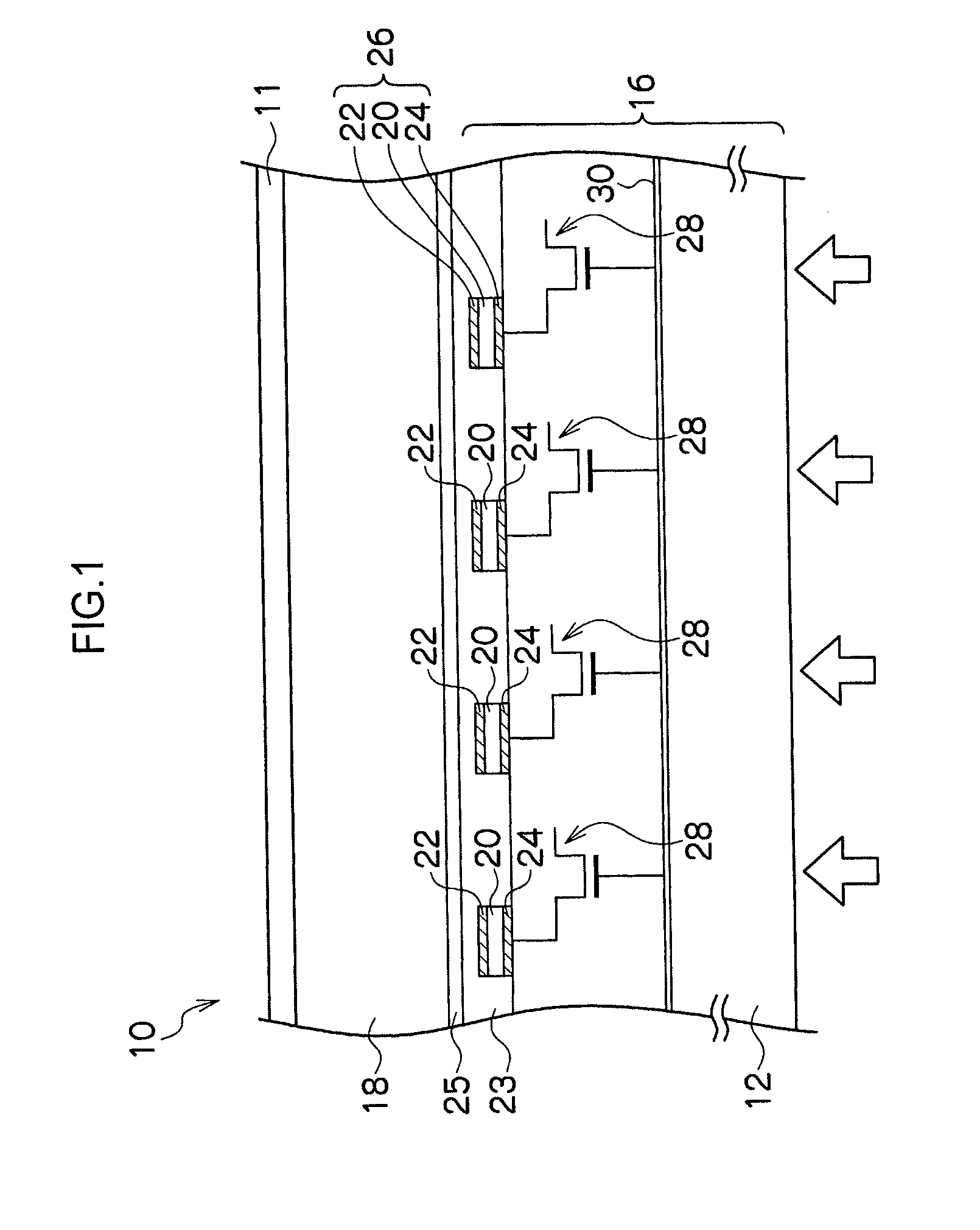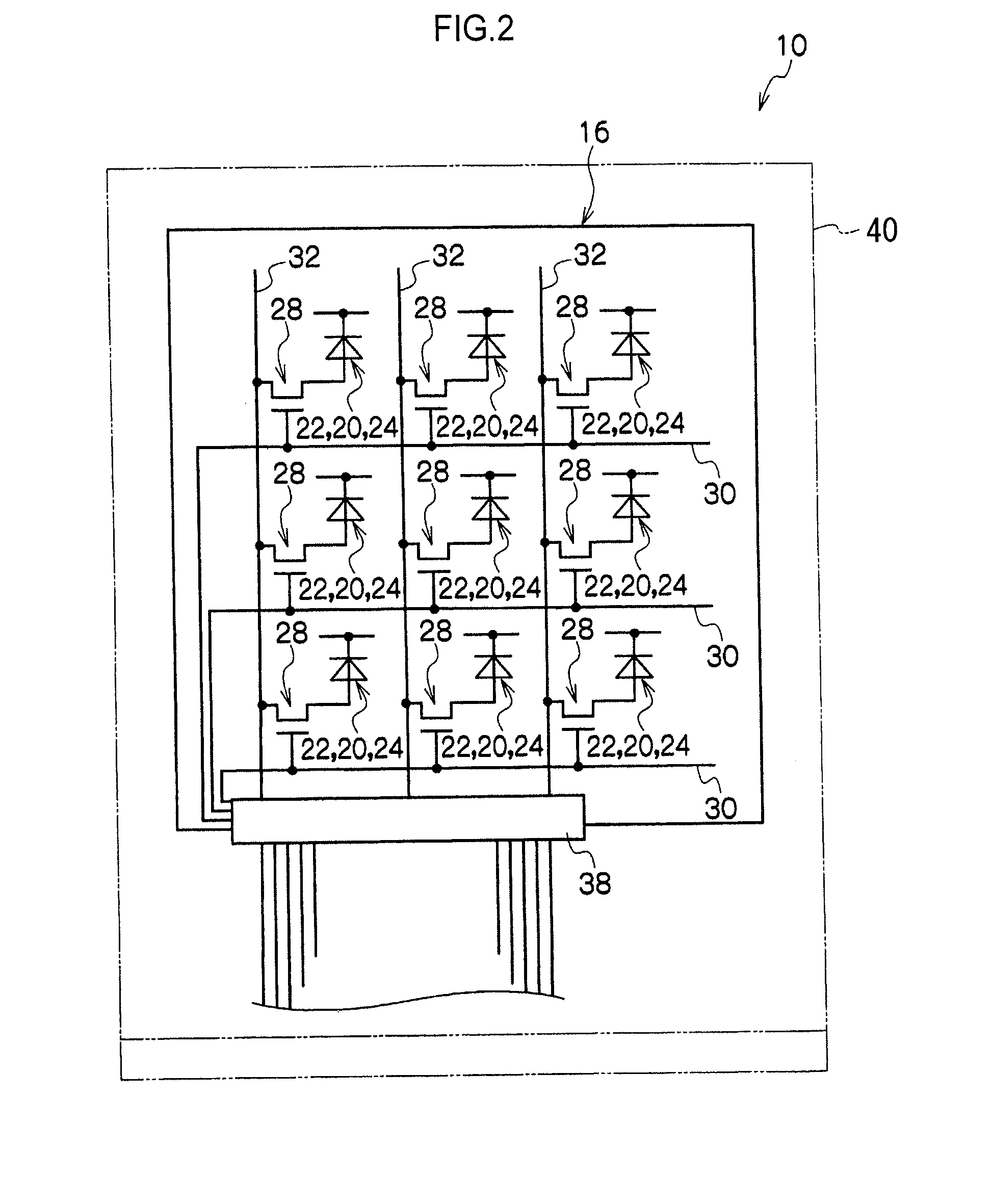Radiation image detection apparatus and manufacturing method of the same
a technology of radiation image and detection apparatus, which is applied in the direction of radiation intensity measurement, x/gamma/cosmic radiation measurement, instruments, etc., can solve the problems of inability to obtain sufficient sensitivity or blurring of an image, scintillator may decrease the yield of an article, and neither sensitivity nor resolution of a produced image are satisfactory, so as to reduce light, not decrease the sharpness of the image, and good film-forming property
- Summary
- Abstract
- Description
- Claims
- Application Information
AI Technical Summary
Benefits of technology
Problems solved by technology
Method used
Image
Examples
example 1
[0068]1. Forming of Scintillator Layer
[0069]A non-alkali glass substrate (0.7 mm thick) was prepared as a support.
[0070]First, a support was surface-treated using Ar plasma for the purpose of improving adhesiveness with a CsI crystal layer. Afterwards, the surface-treated support was set in a vacuum chamber, which serves to form a scintillator film. The vacuum chamber included plural furnaces, which serve to heat raw materials, that is, CsI and TlI independently. After air was exhausted from the chamber, the degree of vacuum was set to be 0.75 Pa by introducing a certain amount of Ar. At a time point when the melting conditions of the raw materials were stabilized due to heating of the raw material furnaces, the support was rotated on a concentric circle by an apparatus tool of the vacuum apparatus, a shutter was opened, and deposition of an area of non-columnar crystals 36 was started.
[0071]Film-forming was carried out under these conditions, and at a time point when the thickness ...
example 2 to example 6
[0093]Radiation image detection apparatuses of Examples 2 to 6 were manufactured in the same fashion as in Example 1, except for setting the thickness of the non-columnar crystal area in Example 1 according to the description in Table 1 by changing the deposition time when the degree of vacuum was 0.75 Pa, and were evaluated in the same fashion. The results are presented in Table 1 below.
example 7 to example 11
[0094]Radiation image detection apparatuses of Examples 7 to 11 were manufactured in the same fashion as in Example 1, except for forming the film of the non-columnar crystal area in Example 1 by changing the degree of vacuum according to the description in Table 1 so that the crystal diameters in the non-columnar crystal area were the same as the description in Table 1, and were evaluated in the same fashion. The results are reported in Table 1 below.
PUM
| Property | Measurement | Unit |
|---|---|---|
| diameter | aaaaa | aaaaa |
| diameter | aaaaa | aaaaa |
| diameters | aaaaa | aaaaa |
Abstract
Description
Claims
Application Information
 Login to View More
Login to View More - R&D
- Intellectual Property
- Life Sciences
- Materials
- Tech Scout
- Unparalleled Data Quality
- Higher Quality Content
- 60% Fewer Hallucinations
Browse by: Latest US Patents, China's latest patents, Technical Efficacy Thesaurus, Application Domain, Technology Topic, Popular Technical Reports.
© 2025 PatSnap. All rights reserved.Legal|Privacy policy|Modern Slavery Act Transparency Statement|Sitemap|About US| Contact US: help@patsnap.com



